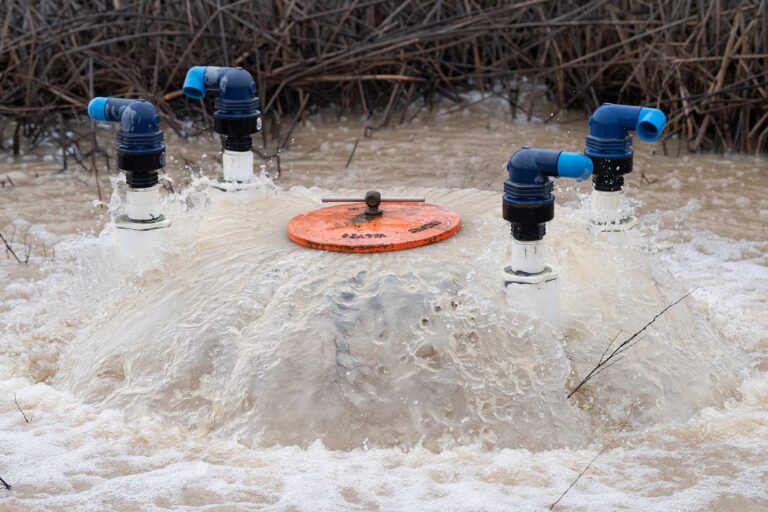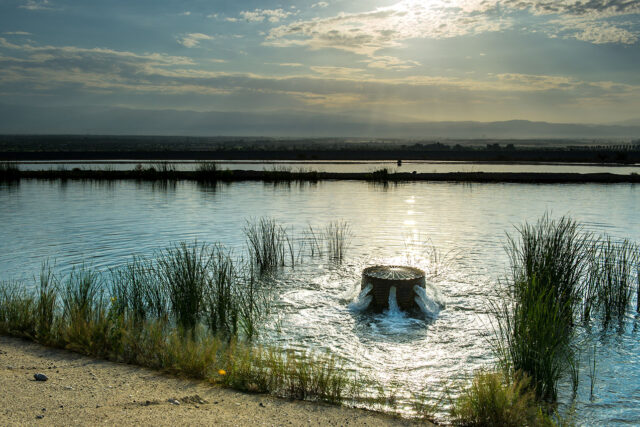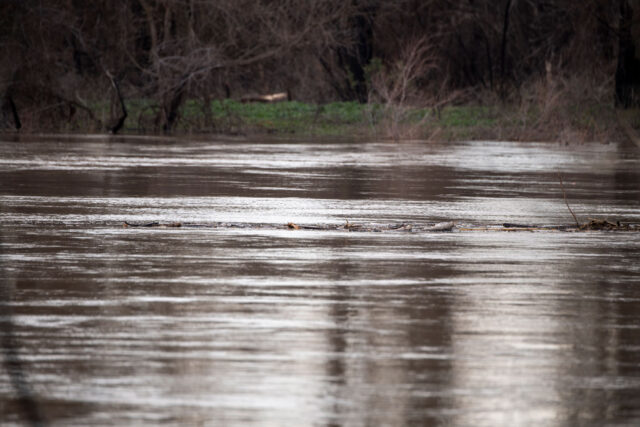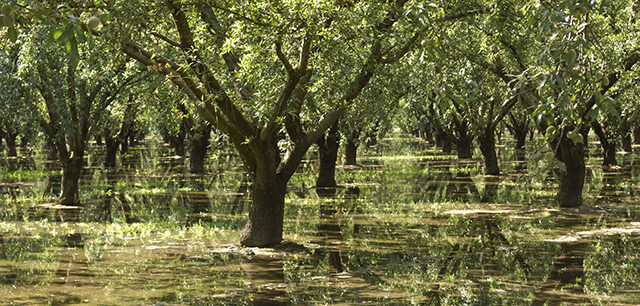In the wake of last month’s storms, many people are wondering if we’re socking away any of that bounty for a drought-y day. We asked UC Davis groundwater hydrologist Helen Dahlke, a member of PPIC Water Policy Center’s research network, to give us the skinny.

How have the recent rains impacted groundwater recharge efforts in California?
I’m definitely glad for the nine atmospheric rivers that came through! I wish they could have been spaced out a little bit, but they filled up reservoirs and moistened soils that were dry from three years of drought. In Northern California, we’re still below our typical annual precipitation; we’re at just 40% of what we got in 2017, which was an exceptionally wet year. In Southern California, we’ve exceeded the typical yearly amount.
In terms of how much groundwater recharge we’ve seen, the verdict is still out. During some past wet years like 1983, 1997, or 2017, we saw a large response in the groundwater table—two to three times the typical bump of a normal winter. With these recent rains, the water table is expected to rebound, but it won’t make up for the groundwater declines that we’ve experienced from years of drought and overpumping.
From your perspective, what are California’s priorities for improving groundwater recharge?
Groundwater recharge seems to be on everyone’s mind. And people are looking at new ways to do this, beyond the traditional recharge basins that are used in some areas. That’s a huge accomplishment compared to 10 years ago. At that time, when I mentioned flooding agricultural fields, people called me names! It’s great to see awareness growing. But despite that, groundwater use has increased during this most recent drought. A recent Nature paper shows that California saw an average overdraft of about 7 million acre-feet per year in the last three drought years.
We have to put quite a bit more effort into recharging water to make up for the deficit we’re creating in drought years, and flooding fields is one promising way to get there. In the last decade, several pilot projects have demonstrated how it could be done. We’ve now got Sustainable Groundwater Management Act implementation grants to assist with building out recharge infrastructure. But we’re not anywhere close to diverting the amount of water we should be diverting when we get big storms.
Have we learned more about which crops can tolerate winter flooding?
We have a project with the Almond Board studying the flooding of almond trees. If they’re on soil that can percolate, and we’re not flooding continuously for 2–4 weeks, it’s not a problem. We’ve also done some studies on vineyards. The lack of oxygen definitely seemed to create issues for the grapevines, even during dormancy. We saw yields drop up to 40% in a vineyard flooded continuously for four weeks but the grapevines were more than 40 years old, which could have contributed to the yield decline.
Based on the literature, it looks like most annual crops tolerate flooding best just after emerging. As soon as they reach the flowering or mature stage, they’re not very tolerant of waterlogged conditions. If flooding lasts for under a week or two, you should be able to get away with it. Alfalfa seems to be pretty tolerant of flooding. Temperature plays a big role, too.
There’s a difference between intentional on-farm recharge and waterlogging. In waterlogging, water goes through the soil very slowly and reaches anoxic—or low-oxygen—conditions quicker. We want to try to recharge on soils that can infiltrate water very fast, because even during dormancy, moving into anoxic conditions can injure root systems.
So, flooding during a plant’s dormancy, during cool temperatures, and on well-drained soil minimizes crop damage. Don’t submerge the plants—that’s key. Even rice has issues surviving submergence.
How do we manage recharge in ways that don’t create groundwater quality problems?
Thomas Harter’s nitrate report alerted us all to the extent of nitrate issues in groundwater. Nitrate mostly comes from manure and synthetic fertilizers, and it can impact human health. So we need to keep a careful eye on how much fertilizer is applied to agricultural fields, how much is taken up, and how much stays behind that could leach into groundwater. That’s already underway with the Irrigated Lands Regulatory Program.
Quite a bit of nitrate in soils is slowly making its way down into groundwater. Much of the nitrate in groundwater right now leached from the surface about 30 years ago. Intentional flooding will accelerate the movement down to the groundwater table. Once it’s below the root zone, it’s out of reach—we can’t take it back out. The only thing we can do is ensure that when we flood a site, we put a lot of water on and create a dilution effect. The goal is not to do 6 inches of recharge—you have to do 3 feet. Sandy soils have no problem with that. If you have finer soil, percolation and dilution take longer.
Although we’ve been actively recharging aquifers in some parts of California for decades, capturing high flows from big storms and getting that in the ground using fields is relatively new. What’s next?
Making progress on recharging more groundwater from big storms will require more joint efforts from multiple actors.
The California Department of Water Resources has started doing watershed-by-watershed studies, modeling where we can do this. The Merced Irrigation District is one of the first success stories. They received a five-year permit to do groundwater recharge—the first the State Water Board has ever issued. It’s a great start, but we probably need another 50–100 projects like this to achieve the amount of recharge we need. It will require permitting support and expeditious review from the State Water Board, and everyone needs to pull on that wagon.




